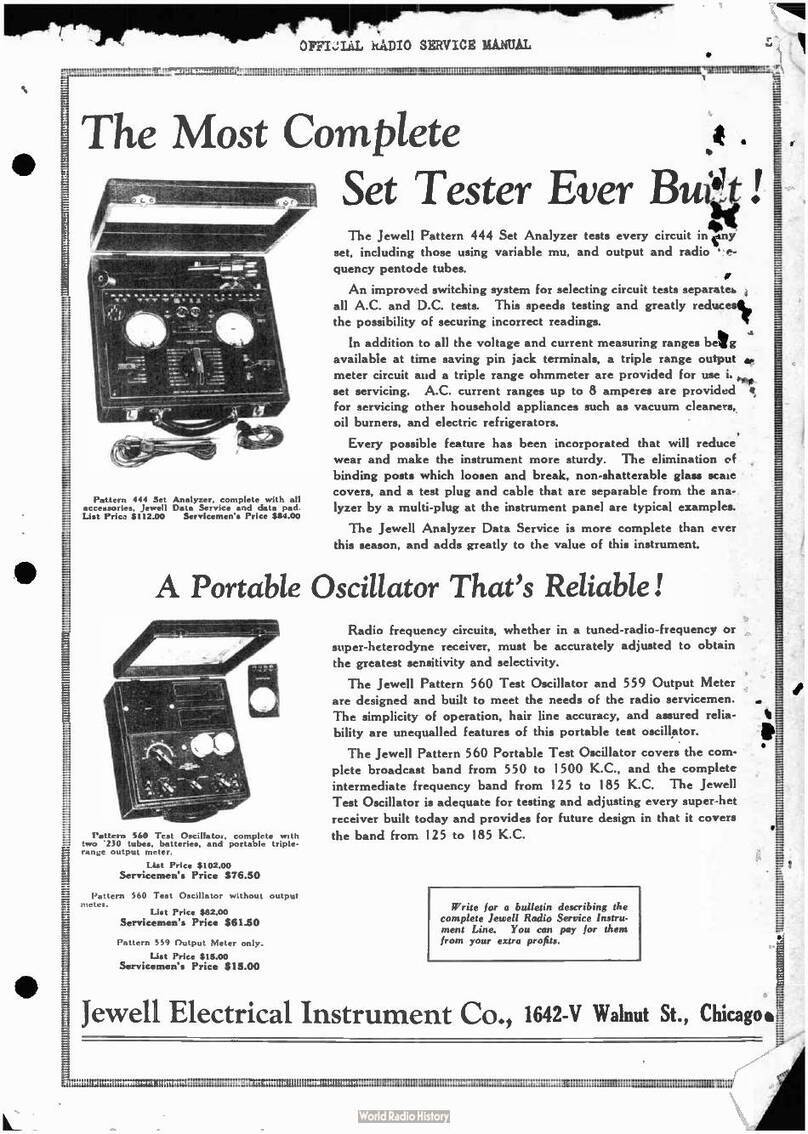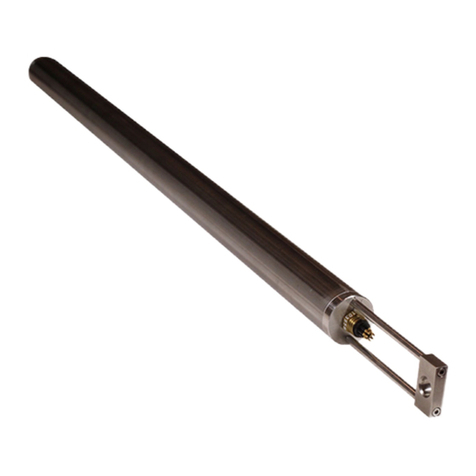2.0 OPERATION
2.1 Using the Controls; Meaning of the Indicators:
There are three 2-position control switches on the front panel of the SCU (Figure 1). The first
is the ON-OFF power switch, the second is the HIGH-LOW gain switch, and the third is the
ON-OFF low-pass filter switch. The ratio between HIGH and LOW gain for your SCU is given in
Appendix B, as are the filter time constants corresponding to the ON and OFF filter switch
positions.
There are two terminal strips on the back panel of the SCU (Figure 1). The lower terminal
strip provides the connections to two tilt transducers, and one temperature sensor. The upper
terminal strip provides the input connection for your external power supply, and the connection
for the conditioned output of the tilt and temperature sensors. The names and functions of the
terminal strip positions on the rear panel of the SCU, are listed below:
NAME FUNCTION
SENSOR 1 The three terminal positions (+), (E), and (-) are for the
three lead wires from the first tilt sensor. (E) is the center,
or neutral wire. (+) and (-) are the positive and negative
pick-ups respectively. For color coding of the sensor lead
wires supplied with your SCU, see Appendix B.
SENSOR 2 The three terminal positions (+), (E), and (-) are for the
three lead wires from the second tilt sensor.
TEMP. SENSOR The three terminal positions (T1), (T2), and (T3) are for
the three lead wires from the LM-35 temperature sensor.
For the color coding of the temperature sensor lead wires
supplied with your SCU, see Appendix B.
OUT +1 This is the Sensor 1 output signal. When operating the
SCU in single-end mode, this signal is referenced to
SIG GND. When operating the SCU in differential mode,
this signal is referenced to OUT -1.
OUT -1 The signal carried on this terminal position is the OUT +1
signal multiplied by -1. OUT +1 is referenced to OUT -1
when a differential output is desired.
OUT +2 This is the Sensor 2 output signal. When operating the
SCU in single-end mode, this signal is referenced to
SIG GND. When operating the SCU in differential mode,
this signal is referenced to OUT -2.


































